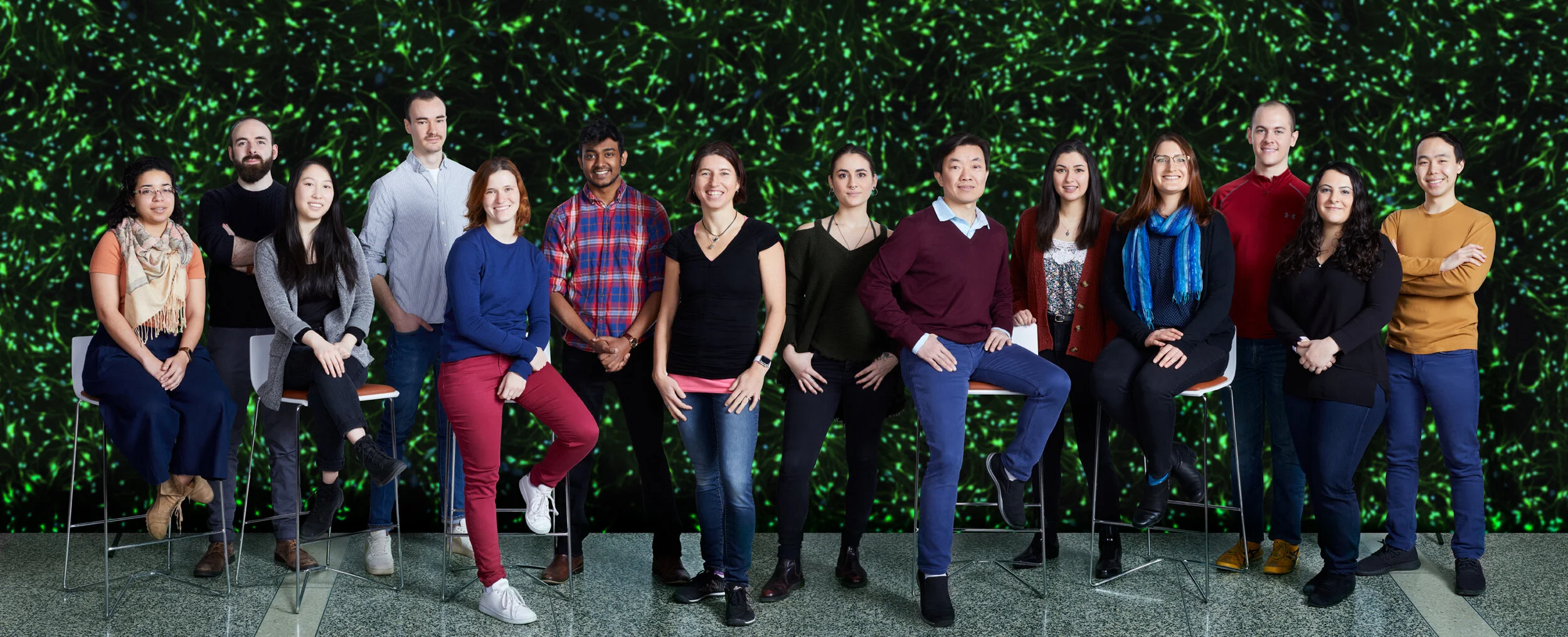mission & values
our mission
unravel the mysteries of the human genome in a collaborative, inclusive, and supportive research training environment
Each person’s distinct genetic, epigenetic, and environmental risk profile predisposes them to some phenotypes and confers resilience to others. My laboratory seeks to decode highly complex genetic insights into medically actionable information, better connecting the expanding list of genetic loci associated with human disease to pathophysiology. Our goal is to improve diagnostics, predict clinical trajectories, and identify pre-symptomatic points of therapeutic intervention.
Towards this, we employ a functional genomics approach that integrates stem cell models and genome engineering to resolve the impact of patient-specific variants across cell types, genetic backgrounds, and environmental conditions. Individually small risk effects combine to yield much larger impacts in aggregate, but the interactions between the myriad variants remain undetermined. Is there a “tipping point” between health and disease? Can ameliorative early interventions “untip” genetic disease risk? We seek to uncover disease-associated interactions within and between the cell types of the brain, querying the impacts of complex genetic risk within increasingly sophisticated neuronal circuits. Thus, we strive to translate risk “variants to genes”, “genes to pathways”, and “pathways to circuits”, revealing the convergent, additive, and synergistic relationships between risk factors within and between the cell types of the brain.
Even for highly penetrant mutations, a spectrum of phenotypes exist. We hope to understand the genetic, cellular, and environmental contexts that buffer genetic risk, and in doing so, develop interventions to help individuals achieve their greatest phenotypic potential. Thus, the variable penetrance of risk variants can be reframed as phenotypic resilience, evidence of biological “cures” capable of limiting, modifying, or preventing disease in individuals with otherwise high genetic predispositions. Such insights could identify therapeutics tailored to an individual’s specific risk profile, and so springboard the development of novel, personalized approaches to treat disease.
on community
We each absorb lessons of stereotypes, prejudice and discrimination. Extensive data demonstrates that an implicit bias is shared by us all, independent of gender, race, ethnicity or sexual orientation (reviewed by [1]). This is exacerbated by a relative reluctance to accept evidence of biases in science [2]. It is critical that as a field we work together to find new ways to foster and promote all scientists. Data indicates that heterogeneous working groups produce higher quality science [3,4]. As scientists trained to interpret complex datasets, we must enact data-driven initiatives: better identifying those policies that produce positive change and abandoning well-intentioned policies that exacerbate existing inequities. Because my goal is to hire “excellent scientists,” I am very careful to comprehensively define and consider all of the skills that we are looking for - in recruiting, I value skills in collaboration and mentorship just as much, if not more, as technical excellence and scientific brilliance.
Numerous think tanks have recommended actionable steps [5] to improve the recruitment, retention and promotion of all scientist. Rather than strengthening the leadership skills of women and minorities (#leanin), institutions should endeavor to more carefully and broadly define “excellence” [6]. I commit to the following actions, and encourage other faculty to do the same: Advocate that future graduate and faculty searches include a “first look”, broadly encouraging applicants without direct connections to our departments to apply and visit. Actively expand our professional networks, establishing new collaborations, properly citing papers, and nominating diverse scientists for seminars, conferences, and awards. For the journals at which we most frequently publish and review, discuss with the editors their efforts to increase diversity in editorial staff, reviewers and authors, and do likewise with the bodies to which we apply and review funding proposals. I pledge to better train, work with, and promote the work of all scientists.
References
1 Corrice, A. Unconscious Bias in Faculty and Leadership Recruitment: A Literature Review. AAMC 9 (2009).
2 Handley, I. M., Brown, E. R., Moss-Racusin, C. A. & Smith, J. L. Quality of evidence revealing subtle gender biases in science is in the eye of the beholder. Proc Natl Acad Sci U S A 112, 13201-13206, doi:10.1073/pnas.1510649112 (2015).
3 Campbell, L. G., Mehtani, S., Dozier, M. E. & Rinehart, J. Gender-heterogeneous working groups produce higher quality science. PLoS One 8, e79147, doi:10.1371/journal.pone.0079147 (2013).
4 Nielsen, M. W. et al. Opinion: Gender diversity leads to better science. Proc Natl Acad Sci U S A 114, 1740-1742, doi:10.1073/pnas.1700616114 (2017).
5 Smith, K. A. et al. Seven actionable strategies for advancing women in science, engineering, and medicine. Cell Stem Cell 16, 221-224, doi:10.1016/j.stem.2015.02.012 (2015).
6 Moss-Racusin, C. A., Dovidio, J. F., Brescoll, V. L., Graham, M. J. & Handelsman, J. Science faculty's subtle gender biases favor male students. Proc Natl Acad Sci U S A 109, 16474-16479, doi:10.1073/pnas.1211286109 (2012).


